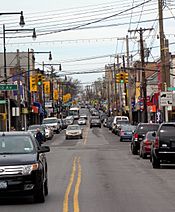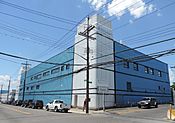Visual pollution facts for kids
Visual pollution is when our surroundings look messy or ugly because of things people have added to the landscape. It makes natural and human-made places less pleasant to look at. Think of it as a kind of pollution that hurts how a place looks and feels.
This type of pollution can make it harder for people and animals to enjoy an area. It can also make it difficult for nature to thrive. While things like wildfires can cause visual pollution, most of it comes from human activities.
Visual pollution is not usually the main problem itself. Instead, it often happens because of other types of pollution or issues. For example, too much trash (which is a form of pollution) can lead to visual pollution. Because it's about how things look, it can sometimes be hard to measure exactly. But experts can use surveys and compare different views to understand how much visual pollution there is.
Visual pollution can appear in many ways. It can be small things, like plastic bags stuck in trees. It can also be large things, like too many bright, clashing advertisements. Other examples include overcrowding in cities, messy overhead power lines, or heavy traffic. When cities are poorly planned, buildings can look out of place next to nature, making the area feel strange or unpleasant.
This kind of pollution can cause problems like making it hard to focus or giving you tired eyes. It can also make people feel more stressed. When visual pollution combines with other issues, like light pollution or noise pollution, it can create even bigger problems for public health.
Contents
How We Measure Visual Pollution
Measuring how much visual pollution there is in a place is called a visual pollution assessment (VPA). In recent years, people have wanted better ways to measure this problem. Now, there are tools that can help measure different things that cause visual pollution. This helps us understand how bad the problem is.
How to Prevent Visual Pollution
In the United States
The United States has taken steps to help prevent visual pollution. For example, the Federal Highway Beautification Act of 1965 limits where billboards can be placed along major highways. This law has greatly reduced the number of billboards you see on these roads. Another law, the Intermodal Surface Transportation Efficiency Act (ISTEA) of 1991, helped make sure that transportation projects fit better with local communities. It also set up scenic routes and provided money for bike trails and saving historic places.
Businesses near highways used to put up huge billboards. But now, there are better ways to advertise. For instance, signs that only show a company's logo and give directions are becoming more common. These signs help travelers without making the landscape look messy. This is a good step toward reducing visual pollution on American highways.
In Brazil
In September 2006, the city of São Paulo in Brazil passed a law called Cidade Limpa (which means "Clean City Law"). This law made it illegal to have almost all outdoor advertisements. This included billboards, ads on buses, and signs in front of stores.
See also
 In Spanish: Contaminación visual para niños
In Spanish: Contaminación visual para niños
- Clutter (marketing)
- Eyesore
- Light pollution
- Noise pollution
- Cidade Limpa



